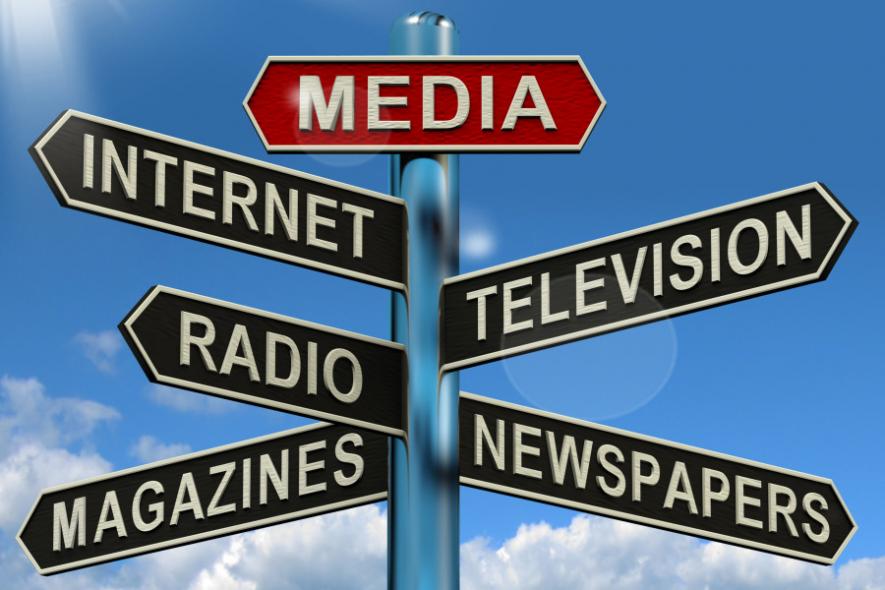The Art of Pressurising the Media

Image Courtesy: visegradplus
Ominous portents, reminders of the dark days of the Emergency and Press censorship are emerging, as India gets set for the 2019 countrywide polls, with talks of an earlier poll if necessary and one country one poll- to support the forces of status quo. As more details of the Punjab National Bank scam come out and todays Gujarat High Court order restoring gags on The Wire, these are just some of the signs.
First, a few hours back came the restoration of the gag order on The Wire from the Gujarat High Court . This means that the Gujarat High Court today allowed the petition moved by Jay Shah, son of BJP president Amit Shah, challenging a lower court order that lifted the gag order barring news portal The Wire to write on the “exceptional” increase in his firm’s turnover. This in effect means that the portal can’t write further on Jay’s firm’s turnover, which reportedly increased 16,000 times in over a year after the election of Prime Minister Narendra Modi. The portal has said it will challenge the order in the Supreme Court. Jay Shah had moved the court in December 2017 against the order of Ahmedabad district court which lifted the ex parte injunction and allowed the web portal to write about Jay’s business without referring to Prime Minister Narendra Modi.
The case pertains to the civil suit filed against the web portal through which Jay Shah has claimed damages of Rs 100 crore. The Ahmedabad district court had granted an interim injunction against the portal, restraining it from further publishing anything on the same subject.
Ironically, this order comes one day after the gag order on the press of Rajasthan was ultimately withdrawn due to public pressure, and not only from the press.
Secondly believe it or not ‘The National Investigation Agency (NIA), set up to deal with combating and investigating terror-related crimes in India, has taken it upon itself to define the work of journalists. In its charge sheet against Kashmiri photo-journalist Kamran Yusuf, in jail since September 5, 2017, the NIA said videos accessed of his work showed that he covered 'anti-national' activities and this went against the 'moral' duty of a journalist to cover developmental activities and government achievements. Is the NIA set up to teach journalism or has it other duties? Or are we to be told: investigative journalism – No; development journalism – Yes; and la dolce vita and trivia - yes.
Thirdly consider the fact that the Press Association of India with its office near Shastri Bhawan was virtually packed off but for a stay recently. Of course, it is also a fact that for the past few years, the Press Information Bureau which is supposed to be the official news feeder of the government virtually became the bureau for official handouts with checks on officials from feeding news other than governmental. Of course in the dark days of the Emergency it had earned the nick name ‘Police Information Bureau’.
Fourthly wasn’t it just a few days ago that even the Prasar Bharti was virtually put into a situation of having official tom-tommers planted at exorbitant rates?
Fifthly, add to it continuous moves to change the managerial structure of the Press Trust of India, with hints coming from none another than the concerned ministries. What is happening in the United News of India, to its employees, and to the agency at large, is a matter to be investigated. Suffice it to say many employees have a backlog of salaries and attempts are being made to kill the agency at the cost of Hindustan Samachar backed by the government. One also witnessed the recent transfer from Delhi of some Doordarshan employees to the Jammu & Kashmir area perhaps as a punishment.
In the days of the Emergency one could see various media institutions, from the Press Information Bureau, to Doordarshan, to Press Clubs being misused by the government. Recall - it was at that time that we saw the slaughter of Samachar and the rise of PTI with the backing of the then Emergency government. Now, with signs of a virtual undeclared emergency when the press is being pressurized and even press bodies threatened, the public service broadcaster has for the present, done well to resist some appointments. Or is there more to it?
Are we seeing almost a cyclical return to the dark days of Emergency and Press Censorship? Or are we seeing test cases to browbeat the profession of journalism and some other institutions to submission? As it is, a large part of the visual media has already been coopted. (Of course, sometimes to the extent of playing the role of official drumbeaters with all the sound and fury.) Recall the wise words of Madison when he said “A popular government, without popular information, or the means of acquiring it, is but a prologue to a farce or a tragedy, or, perhaps both – and a people who mean to be their own governors, must arm themselves with the power which knowledge gives.
(SK Pande is a veteran journalist, freelance writer and researcher.)
Disclaimer: The views expressed here are the author's personal views, and do not necessarily represent the views of Newsclick.
Get the latest reports & analysis with people's perspective on Protests, movements & deep analytical videos, discussions of the current affairs in your Telegram app. Subscribe to NewsClick's Telegram channel & get Real-Time updates on stories, as they get published on our website.






















